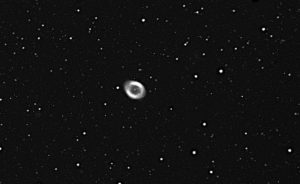In 2009 this interest started with a simple question. “Is the central star of M57 variable?” After visits to “Burnham’s Celestial Handbook,” SIMBAD and other sources it turns out no one really knew. So a plan was devised to do a long time series with the Wright 28 telescope in Cloudcroft, NM. The Wright 28 was an 11″ Celestron that formerly was an AAVSONet telescope run by Tom Krajci at his Astrokolholz Observatory. A series of 50 infrared (I Band) images was taken and the results were mixed. There is ample evidence of variability but the changes are very small in brightness (.4 magnitude) and has some interesting patterns. Still the data is strange enough that it’s results were questioned.
Until Kepler came along! Kepler has 5 planetary nebula in it’s FOV and one of them has been repeatedly imaged. This nebula is NGC 6826 and it shows the characteristics of a pulsating variable. The time frame is different than M 57 but they have similar shaped light curves.
Since 20% of CSPN’s are shown to be spectroscopic binaries there are lots of interesting Light Curves represented in these objects. Some of the possible astrophysical processes could be accretion disk noise, degenerate core pulsations, nebular interference, atmospheric effects as well as the effects of gravity waves. All of this uncertainty in these items make understanding the light curve difficult and places these objects high on a list of scientific targets. The binary CSPN’s are mainly overcontact binaries and their dumb bell shape also complicates the picture.The pulsating model fits better with the M 57 data as well as findings by Albert Grauer et al.
Attached is an early presentation on these stars given to the Las Cruces Astronomy Club as well as an abstract and poster for the Kepler conference.
A Comparison of the Characteristics of the Central Star Poster
